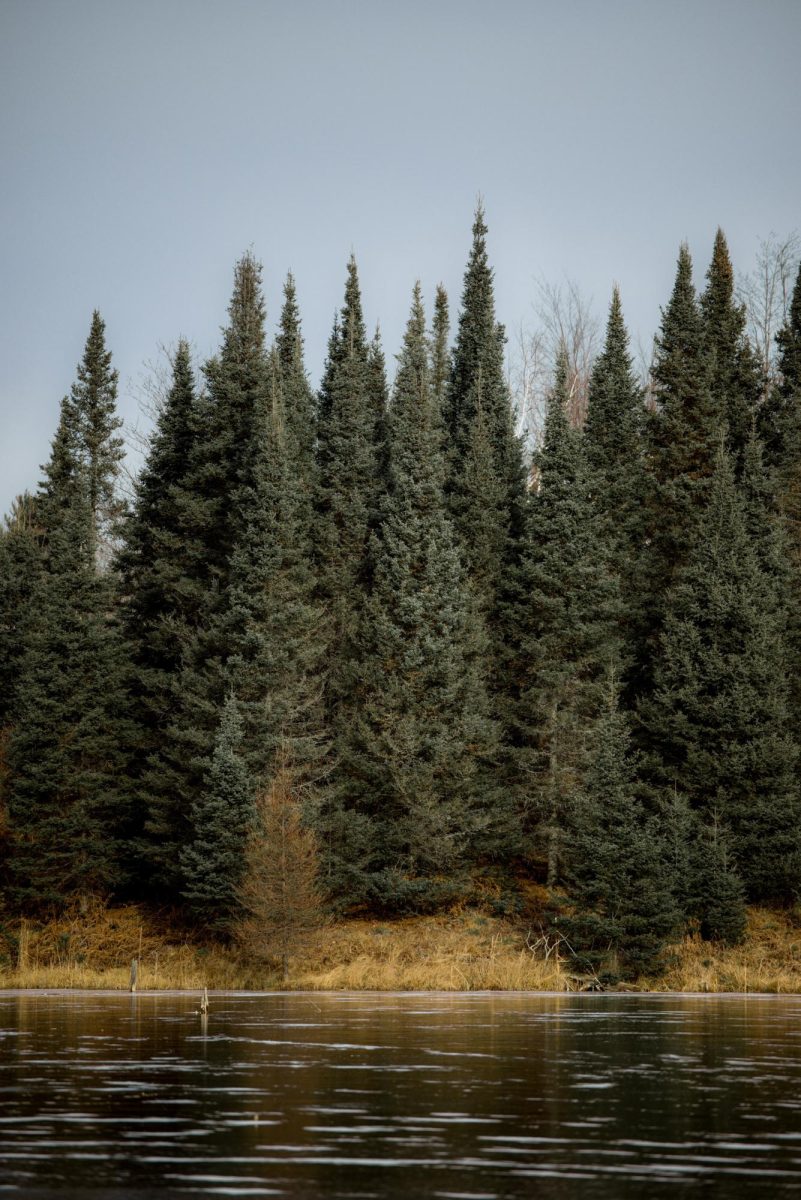UW-Madison senior Joy Martell spent her summer doing ballet.
Ballet on a ski, that is, behind a boat going 22 mph over the choppy waters of Lake Monona.
Martell is one of three UW students who water ski for the Mad-City Ski Team, a local group of skiers, ages eight to 52, that puts on an hour-long show mixing comedy, music and waterskiing stunts each summer.
Between Memorial Day and Labor Day, the team practices three nights a week, performs on the shore of the Monona Terrace every Sunday and competes in regional and national competitions.
The ballet line — 23 girls, each on one ski, executing tricks as a boat tows them in a circle pattern — is one of the most harrowing parts of the show for Martell, a communication arts and legal studies major.
The routine involves holding the tow rope on a skier's calf and between her legs. A fall by one girl will bring down 10 others because of the way the ropes are connected to the boat.
"I'm always really scared I'm going to fall," Martell said.
Sometimes "it comes down to one fall in the wrong place" to make the difference between a win and a loss at a competition, Martell said. At the Wisconsin State Show Ski Tournament in late July, Mad-City barely edged out a rival Janesville team with a total score of 2,008 to 1,983.
So far, Martell hasn't fallen on the ballet line, and the team has won its competitions. Last month, Mad-City took home its third state and national show skiing tournament titles in four years. It's no small accomplishment in a state that is often called the "show-skiing capital of the world."
As the Mad-City Ski Team heads indoors to prepare next summer's show, UW's Water Ski and Wakeboard Team is readying itself for the fall tournament circuit.
The team has earned several tournament wins since its inception in 1999, placing first at two regional tournaments and eighth at the national collegiate tournament in Sacramento, Calif. last fall.
"We're looking awesome this year," said team president Patrick McDermott, a fifth-year senior majoring in economics. "This is the best chance we've had at taking the whole Midwest region."
The team will be battling perennial rival Purdue to claim the regional title, and McDermott expects the team to take seventh or eighth at Division One Nationals in Zachary, La.
Risky business on the water
Martell started show skiing alongside Mad-City teammate Danielle Ries, a recent UW-Madison genetics graduate, on the Ski Sprites Water Ski Team in Eau Claire.
Although Ries skied for the Sprites for ten years before joining a paid water ski show at a Six Flags theme park in New Jersey, Martell joined the team at age 16, once she could drive herself to practice.
After four years on the Eau Claire team, Martell started with Mad-City, where she enjoys the exercise of water-skiing and the family dynamic of the team. Her favorite aspect of show skiing is being part of a new act the "first time it comes together and makes it all the way back to the beach."
Ries also enjoys the challenge of new stunts, and on the Eau Claire team, she and her sister even took on water-skiing roles traditionally reserved for men: Ries skied in the bottom middle spot of an unorthodox all-girl pyramid until they decided to quit before someone was injured.
The concern is legitimate in a sport where the twisting motions involved in many tricks can result in a torn ACL or other injuries.
"Most of the memorable (water-skiing) stories involve people getting hurt," Ries said.
In fact, Ries took a year off from show-skiing after she injured her knee while doing a 360 off a jump in New Jersey. She turned too far in the air, landing backwards and shattering her kneecap.
"I'm kind of accident prone, but I also try more than most," Ries said. She remains undaunted in her aspiration to someday be part of a pyramid with five tiers of skiers.
But even the twin four-tier, 12-person pyramids Mad-City performs during its show as part of a three-pyramid formation can be risky.
"The more people and equipment involved, the more things have to go right for people to ski away," Martell said. "It does get dangerous."
Ries has stayed away from jumping during her first summer with the Mad-City team, but she resumed barefoot skiing and is regarded as a barefoot specialist by her teammates. She performed a barefoot stunt known as a "bomb-out" at the state tournament, starting on two skis and jumping out of them to barefoot away.
Despite the inherent risk, Ries likes barefooting and jumping because they're "more exciting than everything else," especially the on-shore dance routine she participates in with most of the girls on the team, she said.
The sporting life
There's no dancing on the dock for the UW team, which participates in water-ski and wakeboard events focused on competition rather than family entertainment. The team competes primarily in jump, trick and slalom skiing at three-event tournaments, and some members attend wakeboard and barefoot competitions, including team member and national barefooting champion Liz Flaherty.
The team usually includes 65 to 80 students, about 20 of whom compete regularly as part of the A-team. The rest come out to improve their skills or ski for fun, said McDermott, whose best event is jump skiing, which entails skiing off a five-foot ramp for distance.
The boat usually goes about 32 mph, but the skier is going much faster after cutting across the wake several times to build up speed. The best jumpers often catch up to the boat on their way to the ramp, and top skiers on the UW team regularly jump over 100 feet, McDermott said.
For trick skiing, skiers have 20 seconds to score as many points as possible with a variety of tricks, including side slides, 180s on the surface of the water and flips and wake 180s, which require jumping the wake behind the boat.
Slalom skiing takes place on a straight course between six buoys about 37-and-a-half feet from alternating sides of the boat. Competitors ski around the outside of each buoy as the speed increases with each pass until they miss a buoy or hit 36 mph, in which case the rope, usually started at 60 feet, is shortened incrementally before each pass.
Nick Morrison, a UW junior and finance major, hopes to slalom ski this fall for the A-team, after competing with the B-team last year. He'll be walking down to the Monona Terrace, slalom ski in tow, to get in practice runs three to four times a week this fall, he said.
Although the competition is fierce at tournaments, the level of camaraderie remains high, both within the team and among contestants.
"Being on the team, you make a lot of friends, and the tournaments are a lot of fun," Morrison said.
The 250 to 300 skiers who see each other over and over at competitions usually camp out on-site and hang out after a long day of skiing.
They don't party too hard, McDermott said, since the skiing requires leg, back and overall strength to "get your body and the ski to do what you want it to."
The training before the tournaments adds endurance to the equation, and competitors travels to private lakes and pulls twice-weekly 6 a.m. practices to prepare. The calm water and beautiful scenery on the lake alleviate early-morning grogginess.
"The best time (for water-skiing) is at dawn when the fog is coming off the lake," McDermott said. "It's so flat, it looks like a mirror. … It's heaven, man."







